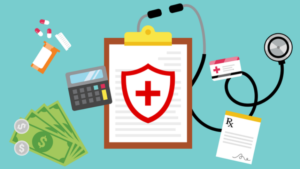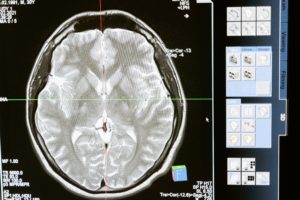 A recent study showed that 9% of US adults owe a medical debt of $250 or more. That’s 23 million people! New rules about reporting medical debt are going into effect. Read this article to know your rights and responsibilities.
A recent study showed that 9% of US adults owe a medical debt of $250 or more. That’s 23 million people! New rules about reporting medical debt are going into effect. Read this article to know your rights and responsibilities.
Ask These 10 Questions to Find Out How Much Your Healthcare Will Cost
 Healthcare costs vary based on a number of factors. Median out-of-pocket spending on health care ranged from $360 per year in Hawaii to $1,500 per year in Nebraska, according to a 2019 report from The Commonwealth Fund. While some costs are set, such as the premium price for your health plan, others can be planned or negotiated if you know the right questions to ask. Read the full article…
Healthcare costs vary based on a number of factors. Median out-of-pocket spending on health care ranged from $360 per year in Hawaii to $1,500 per year in Nebraska, according to a 2019 report from The Commonwealth Fund. While some costs are set, such as the premium price for your health plan, others can be planned or negotiated if you know the right questions to ask. Read the full article…
Tips and Tricks for Accessing Free and Low-Cost Healthcare
 Uninsured or underinsured people are charged more for their healthcare and typically pay more out of pocket. That’s because they don’t benefit from the reduced rates negotiated by private health insurance companies and public insurers such as Medicare and Medicaid. Additionally, most uninsured people do not receive discounted or free health services. Kaiser Family Foundation (KFF) found that in 2015, only 27% of uninsured adults reported receiving free or reduced-cost care. Please read this article for some tips and tricks to help you find free and/or low cost healthcare services.
Uninsured or underinsured people are charged more for their healthcare and typically pay more out of pocket. That’s because they don’t benefit from the reduced rates negotiated by private health insurance companies and public insurers such as Medicare and Medicaid. Additionally, most uninsured people do not receive discounted or free health services. Kaiser Family Foundation (KFF) found that in 2015, only 27% of uninsured adults reported receiving free or reduced-cost care. Please read this article for some tips and tricks to help you find free and/or low cost healthcare services.
How Much Do Allergy Shots Cost?
 Allergy shots can be expensive at first because there is often a long-term course of treatment. But, they may reap financial benefits if you find relief later and don’t have the continuing costs of managing your symptoms. Your treatment may require more than one vial, which means you will have more than one injection at each appointment. Build-up injections are usually required on a regular basis for 6 months or longer. You also may need a maintenance dose less often, but those can last for 3 to 5 years. Many insurance plans will cover allergy shots, but you may still have out-of-pocket costs. Read the full article…
Allergy shots can be expensive at first because there is often a long-term course of treatment. But, they may reap financial benefits if you find relief later and don’t have the continuing costs of managing your symptoms. Your treatment may require more than one vial, which means you will have more than one injection at each appointment. Build-up injections are usually required on a regular basis for 6 months or longer. You also may need a maintenance dose less often, but those can last for 3 to 5 years. Many insurance plans will cover allergy shots, but you may still have out-of-pocket costs. Read the full article…
Good News in Detecting Mild Traumatic Brain Injury – a Silent Epidemic
 Every year an estimated 2.8 million individuals sustain a traumatic brain injury (TBI). Approximately 75% are classified as mild – yet the resulting effects are hardly mild. Although many people do not have visible physical signs, they develop disabling cognitive, psychological and/or behavioral impairments. Employment disabilities often go unnoticed or are misdiagnosed.
Every year an estimated 2.8 million individuals sustain a traumatic brain injury (TBI). Approximately 75% are classified as mild – yet the resulting effects are hardly mild. Although many people do not have visible physical signs, they develop disabling cognitive, psychological and/or behavioral impairments. Employment disabilities often go unnoticed or are misdiagnosed.
On February 14, 2018, the FDA signed off on a first-of-its-kind blood test. Up until now, physicians have had to rely on CT scans or MRIs to get a picture of the brain. Both are costly and not always reliable in diagnosing mild traumatic brain injuries.
The Banyan Brain Trauma Indicator (BTI) is a blood test that measures the levels of two brain-specific proteins which appear in the blood within 12 hours of the injury. Although it does not eliminate the need for observation and intervention from licensed medical professionals, this less-costly alternative decreases the likelihood of misdiagnosis and the resulting negative consequences.
- « Previous Page
- 1
- …
- 20
- 21
- 22
- 23
- 24
- …
- 46
- Next Page »
